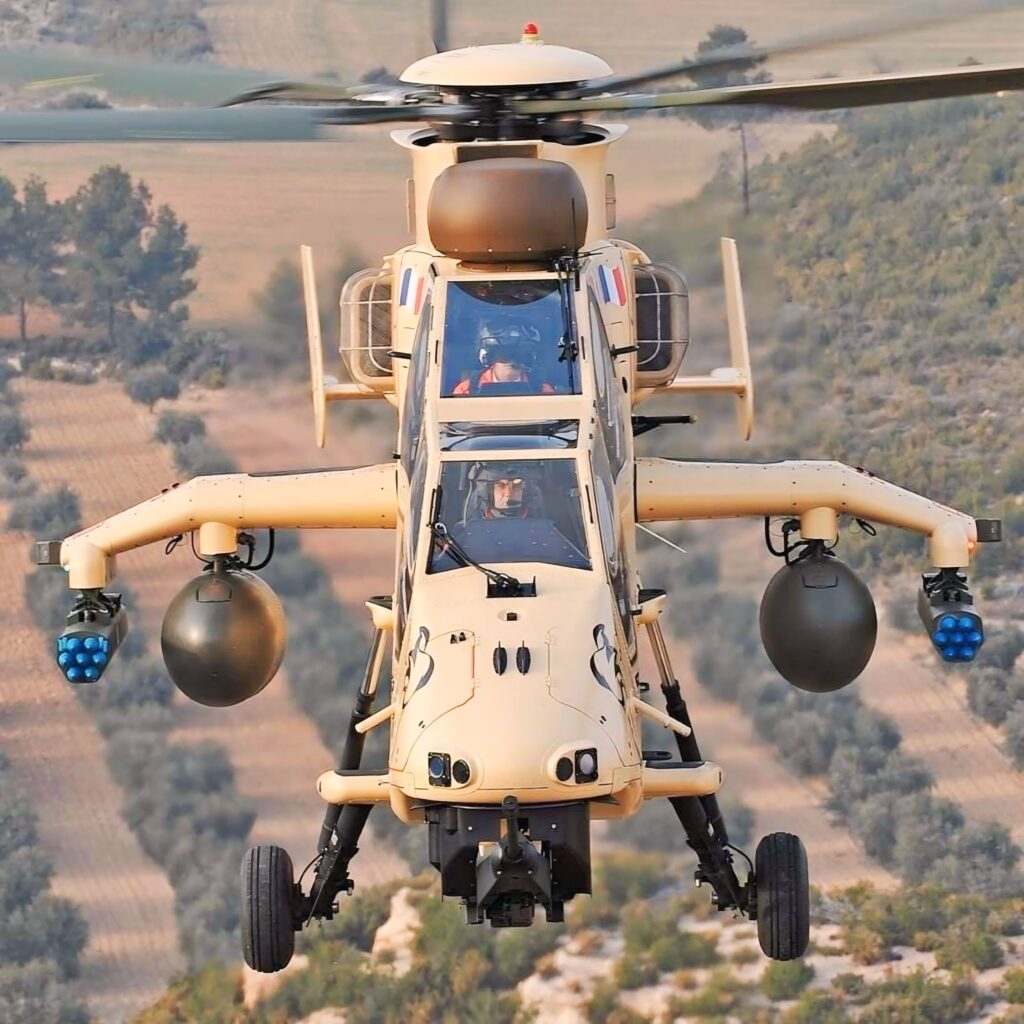
The Airbus Helicopters Tiger HAD is a modern multi-role attack helicopter designed to meet the demanding requirements of today’s battlefields. Built on the proven Tiger platform, the HAD (Helicoptero de Apoyo y Destrucción) variant was developed primarily for the French and Spanish armed forces, combining firepower, agility, and protection in one versatile airframe. It represents the most powerful version of the Tiger family, with enhancements in both survivability and weapons integration.
The Tiger program began in the 1980s as a joint Franco-German effort to produce an advanced attack helicopter capable of rivaling American and Russian designs. The original variants included the Tiger HAP for armed escort missions and the UHT for Germany, which emphasized anti-tank capabilities. The HAD builds on these earlier models but introduces substantial improvements that make it a true multi-mission platform.
One of the most significant upgrades on the Tiger HAD is its engine. Fitted with uprated MTR390-E turboshafts, the helicopter delivers more power than earlier versions, which is particularly valuable in “hot and high” environments such as Afghanistan, the Middle East, or mountainous regions. This improved propulsion increases payload capacity and gives the helicopter better overall performance, ensuring it can operate effectively in challenging climates.
Armament flexibility is another defining feature of the Tiger HAD. It can be equipped with a 30mm chin-mounted cannon, guided air-to-ground missiles, air-to-air missiles, and unguided rockets. For anti-armor missions, it is capable of firing the AGM-114 Hellfire or the Spike missile system, depending on customer requirements. This makes it a formidable platform against tanks and fortified positions. At the same time, its ability to carry Mistral air-to-air missiles provides protection against enemy aircraft or drones, extending its combat role beyond ground attack.
Survivability is also at the core of the HAD’s design. The helicopter includes ballistic protection for the crew, self-sealing fuel tanks, and advanced electronic warfare systems. These defensive suites detect, jam, or decoy incoming threats such as radar-guided missiles or infrared seekers. Combined with its high agility and low radar profile, the Tiger HAD is well suited for modern asymmetric conflicts where helicopters are exposed to varied threats.
Operational flexibility extends beyond combat. The HAD can undertake armed reconnaissance, close air support, escort of transport helicopters, and deep strike missions. Its digital avionics suite provides pilots with real-time battlefield awareness, while its helmet-mounted sight and display system allow rapid target acquisition and engagement. The helicopter is designed for interoperability within NATO forces, which makes it easier to integrate in multinational operations.
Since its introduction, the Tiger HAD has seen active service in combat operations, notably with French forces in Afghanistan, Mali, and other conflict zones. Its performance in these theaters has demonstrated both reliability and effectiveness in austere conditions. Spain also deploys the HAD, reflecting the helicopter’s role as a key asset in European defense.
In summary, the Airbus Helicopters Tiger HAD stands as one of the most advanced attack helicopters currently in service. With powerful engines, a broad weapons loadout, and sophisticated defensive systems, it provides its operators with a robust solution for modern warfare. The HAD variant shows how the Tiger platform has evolved to meet changing tactical demands, ensuring its relevance well into the future.


